Even a country with security standards like Japan is not free from tragedies. Over the years, Japan has witnessed a series of air accidents that have left deep marks, including one of the largest air accidents of all. This article examines the main commercial flight accidents in Japan, analyzing the causes, circumstances and impacts.
Table of Content
1. Japan Airlines Flight 123 (1985)
Fatalities: 520
Japan Airlines Flight 123 is the most deadly accident in aviation history involving a single aircraft. On August 12, 1985, Boeing 747SR-46 departed from Tokyo to Osaka.
About 12 minutes after take-off, a catastrophic failure occurred in the rear of the aircraft, where air pressure exploded the pressure wall and caused the vertical stabilizer to be destroyed. With the loss of directional control, the pilots fought desperately to stabilize the aircraft.
After 32 minutes of uncontrolled flight, the plane crashed into Takamagahara Mountain in Gunma. Only four people survived between 524 on board. The investigation revealed that the accident was caused by a repair failure seven years earlier. This disaster exposed failures in the airline's maintenance and review system, leading to significant reforms in the industry.
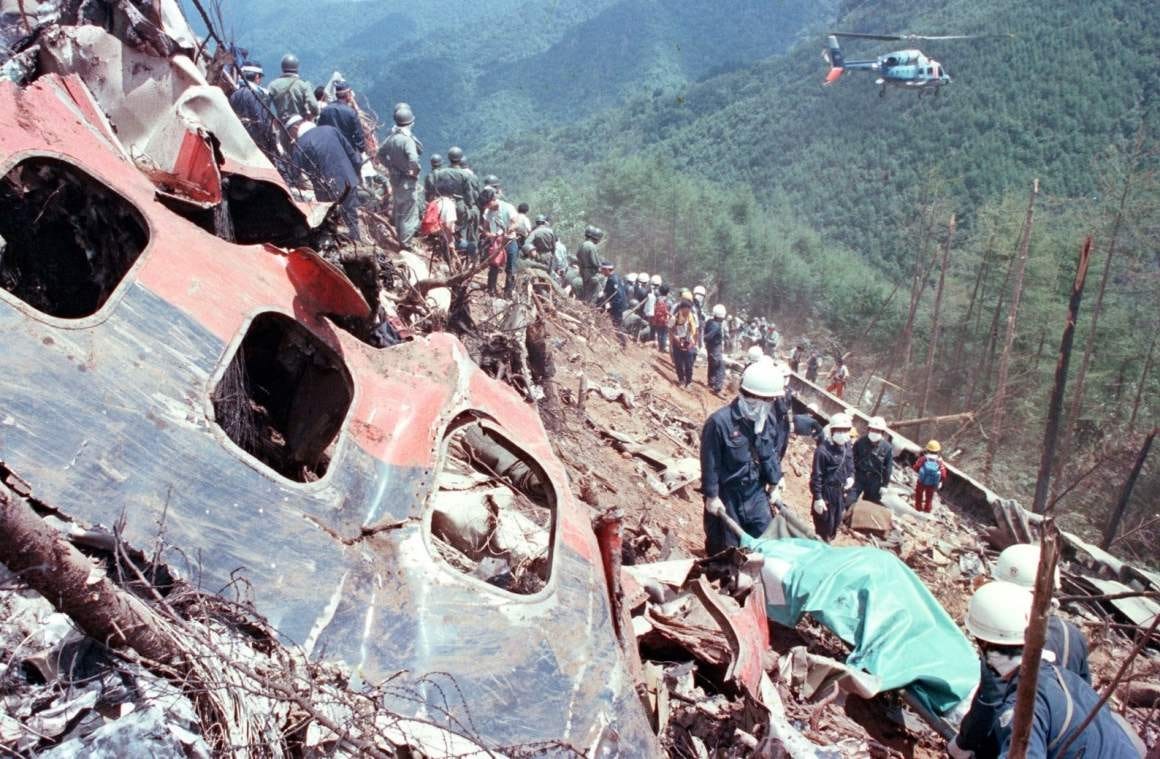
2. All Nippon Airways Flight 58 (1971)
Fatalities: 162
On July 30, 1971, the All Nippon Airways Flight 58, a Boeing 727, was on its way from Sapporo to Tokyo when it collided in the air with an F-86 Sabre fighter from Japan's Self-Defense Air Force.
The fighter pilot was on a training mission and couldn't avoid the collision. The impact cut off much of the commercial plane's tail, resulting in its uncontrollable fall in Shizukuishi, Iwate province. All 162 occupants aboard Boeing 727 died instantly.
The accident led to greater scrutiny of military training operations in civilian areas and resulted in significant changes in air traffic regulations to avoid future tragedies.
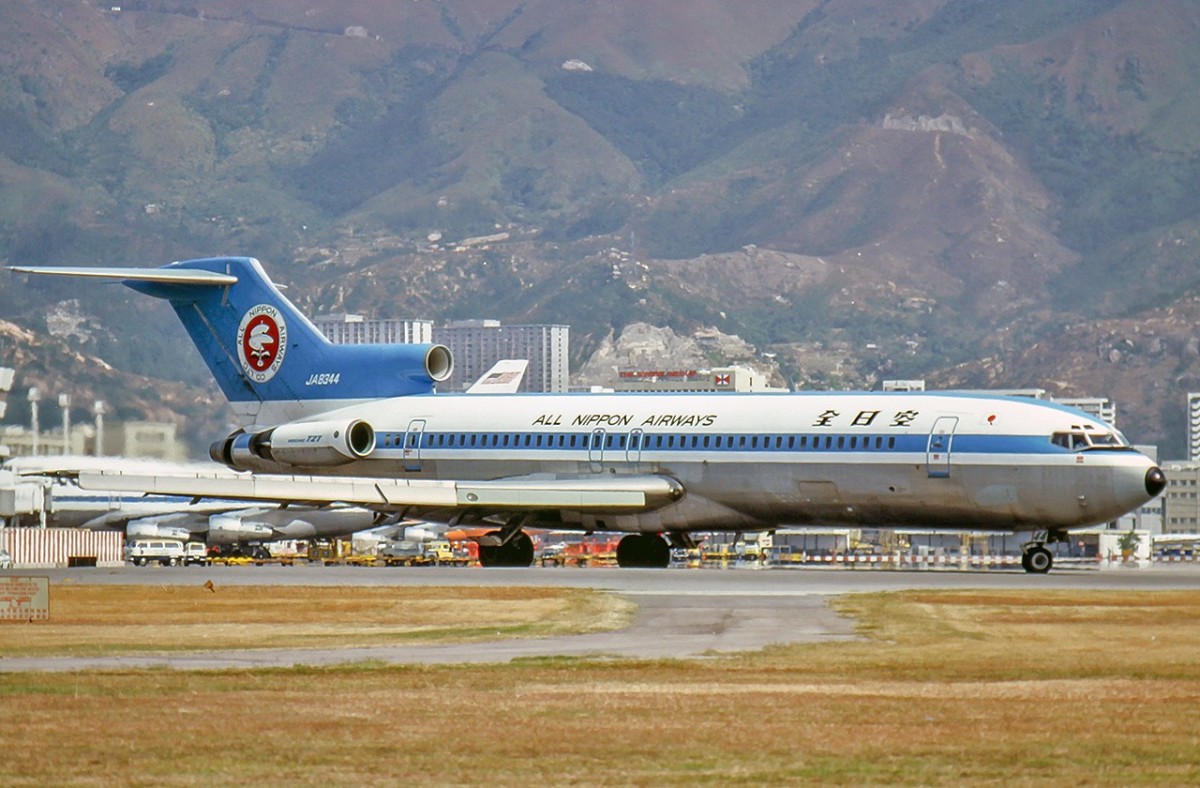
3. China Airlines Flight 140 (1994)
Fatalities: 264
On 26 April 1994, China Airlines Flight 140, an Airbus A300, was approaching Nagoya Airport after a flight from Taipei. During the final approach, the crew made an error by inadvertently triggering the climb mode on the automatic control system.
Subsequent attempts to correct the error resulted in the aircraft's nose being raised to an unsustainable angle, leading to loss of support and fall. The aircraft crashed violently against the ground, resulting in 264 deaths of the 271 people on board. The accident highlighted the need for a better understanding of automatic systems by pilots and led to revisions in training procedures.
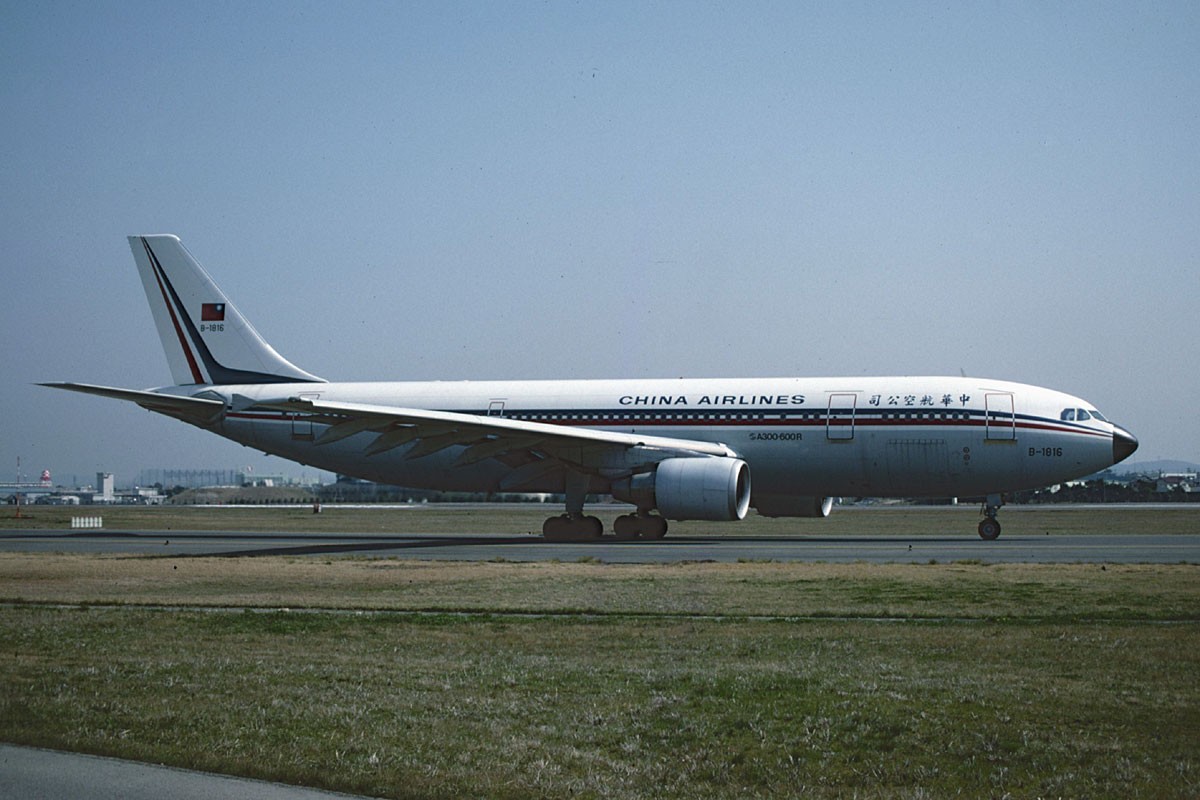
4. All Nippon Airways Flight 60 (1966)
Fatalities: 133
All Nippon Airways Flight 60 was a domestic flight from Sapporo to Tokyo that ended in tragedy on February 4, 1966. During the approach to Haneda Airport, Boeing 727 fell in Tokyo Bay, just a few minutes from the airport. All 133 people on board died.
The exact causes of the accident have never been fully clarified, but it is speculated that it may have been due to a spatial disorientation of pilots in low visibility conditions. This accident marked one of the greatest air tragedies in Japan up to that time and brought to light the importance of instrument approach technologies at airports.
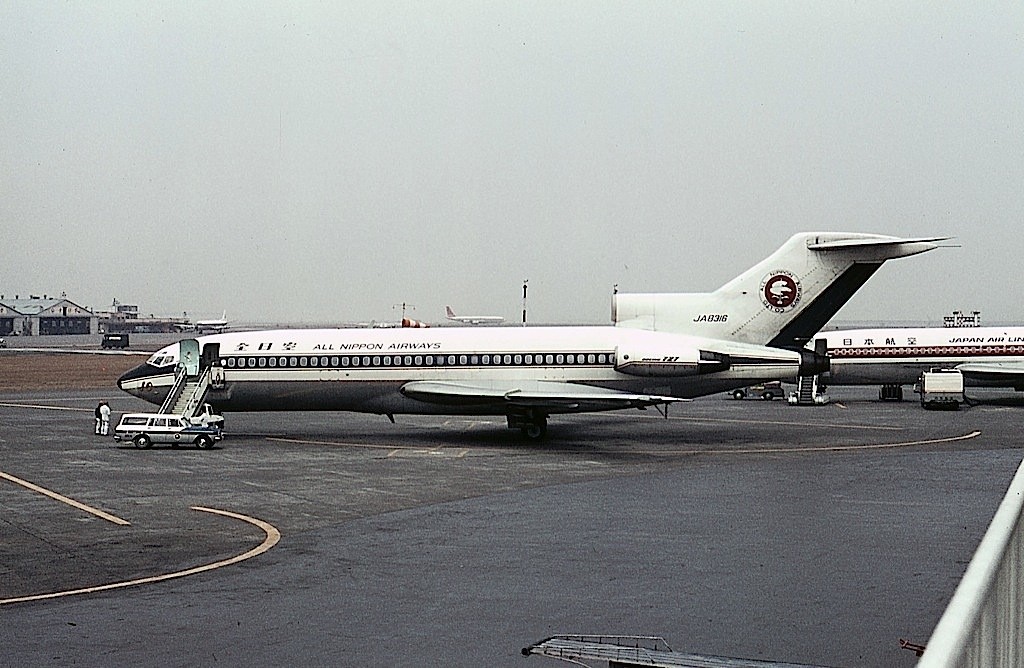
5. All Nippon Airways Flight 533 (1966)
Fatalities: 50
On 13 November 1966, the All Nippon Airways Flight 533, a NAMC YS-11, fell during its approach to Matsuyama Airport in bad weather conditions. The aircraft was performing a domestic flight when the pilots lost control due to navigational errors and problems with reduced visibility.
The aircraft crashed into the ground, resulting in the death of 50 of the 60 people on board. This accident was significant for Japanese aviation, as it highlighted the need for improvements in navigation aids and pilot training to operate under adverse weather conditions.
6. Japan Airlines Flight 471 (1972)
Fatalities: 82
Although it occurred outside Japan, the accident of Japan Airlines Flight 471 on June 14, 1972 had a major impact on the Japanese airline. Douglas DC-8-53 was approaching Palam International Airport in New Delhi when the aircraft deviated from the route and crashed into the ground.
The investigation revealed that a failure in navigation and inadequate communication among pilots were the main causes of the accident. Of the 87 people on board, 82 died. This accident led to a review of Japan Airlines' navigation and communication practices, in addition to highlighting the importance of clear coordination between crews.
7. Japan Airlines Flight 446 (1982)
Fatalities: 62
On November 28, 1982, Japan Airlines Flight 446, a McDonnell Douglas DC-8, suffered an accident at Soekarno-Hatta International Airport in Jakarta, Indonesia. During take-off, the aircraft experienced a technical failure that led to the plane's crash.
Of the 68 people on board, 62 died. Although the accident occurred outside Japan, it generated a thorough analysis of the maintenance and operation practices of Japan Airlines, resulting in improvements in operational security.
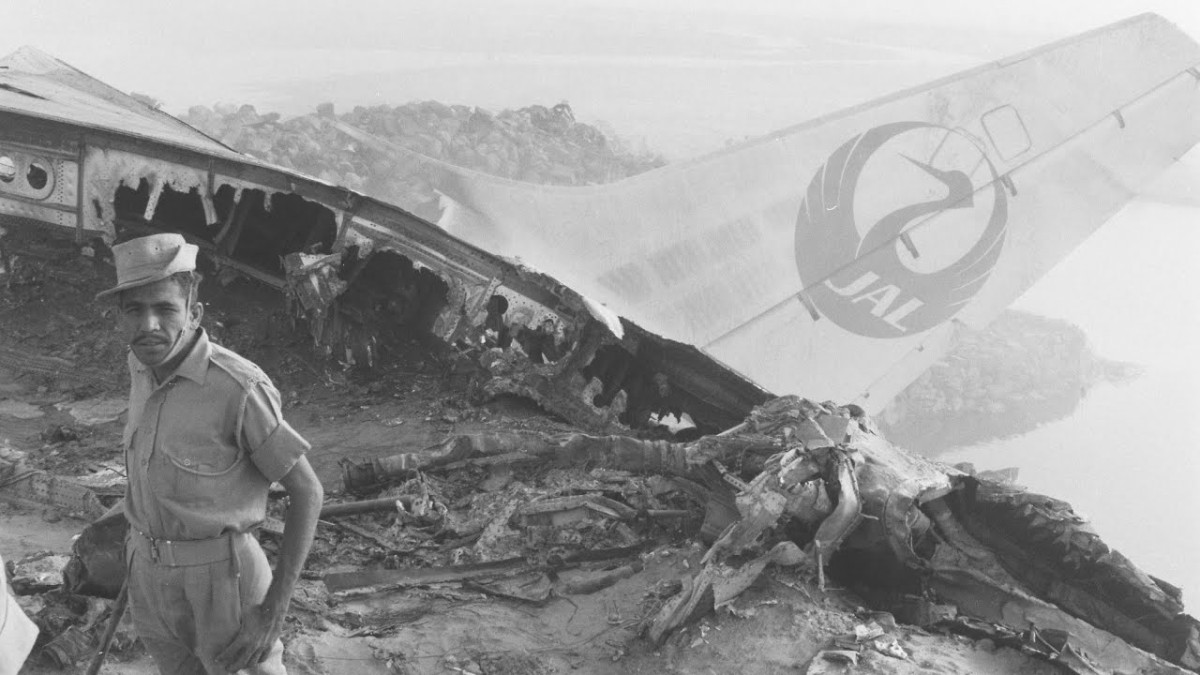
8. Garuda Indonesia Flight 865 (1996)
Fatalities: 3
On June 13, 1996, Garuda Indonesia Flight 865, a McDonnell Douglas DC-10-30, was about to take off from Fukuoka Airport, Japan, when one of the engines failed. The crew tried to abort the take-off, but the aircraft failed to stop before the end of the runway and collided with a barrier resulting in a fire.
Although most passengers survived, three people died in the accident. This event highlighted the importance of take-off abortion procedures and the need for rapid and effective responses in emergency situations.
Nine. Air Accident at Haneda Airport (2024)
Fatalities: 5
On 2 January 2024, there was a tragic accident at Haneda Airport in Tokyo involving a commercial aircraft of Japan Airlines (JAL) and an aircraft of the Japan Coast Guard. JAL Flight 516, an Airbus A350-900, was landing at the airport after taking off from Sapporo, when it crashed with a De Havilland Canada aircraft Dash 8-Q300, which was on a humanitarian aid mission after a devastating earthquake that struck western Japan.
The Coast Guard plane was on its way to Niigata to help rescue the earthquake victims. During the landing process, the JAL aircraft collided with Dash 8, resulting in an immediate fire that swallowed both aircraft on the runway. Despite the intense fire, all 367 passengers and 12 crew members aboard the commercial flight managed to evacuate safely, but tragically, five members of the Coast Guard crew lost their lives.
The initial investigation suggests that the commercial flight crew did not see the Coast Guard aircraft on the runway before the collision. The incident, captured by security cameras and witnessed by other passengers at the airport, highlighted potential failures in air traffic coordination during emergency operations. This tragic accident highlights the challenges and risks faced during complex and urgent operations, such as relief missions in natural disasters.
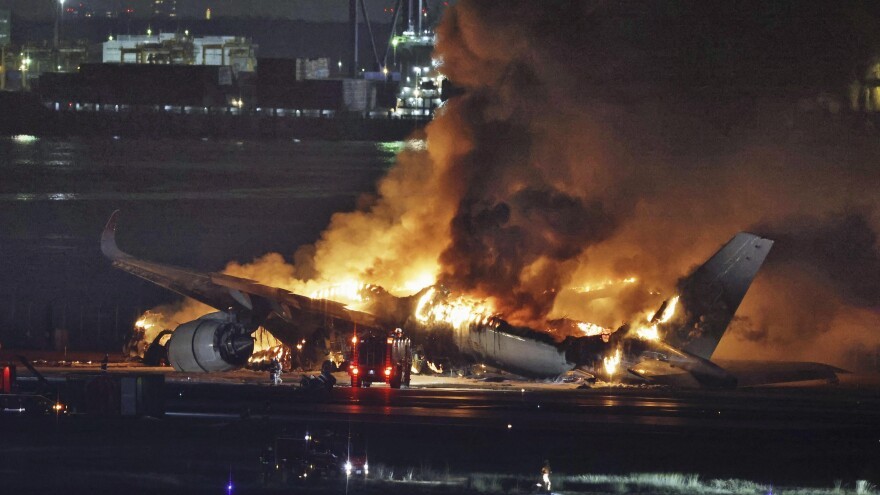
Other Accidents without Fatalities
1. All Nippon Airways Flight 1603 (2001)
- Date: March 18, 2001
- Place: Kochi Airport
- Description: A Bombardier Dash 8 operated by All Nippon Airways suffered a crash on the landing gear during landing under adverse weather conditions. All 60 passengers and crew members on board were able to evacuate the aircraft without serious injuries.
2. Japan Airlines Flight 715 (2009)
- Date: February 16, 2009
- Place: Kansai International Airport
- Description: A Boeing 747-400 from Japan Airlines had a sudden landing that caused damage to the fuselage. The crew managed to maintain control of the aircraft, and all 345 passengers and crew members on board left unharmed.
3. Skymark Airlines Flight 116 (2015)
- Date: 5 de janeiro de 2015
- Place: Naha Airport, Okinawa
- Description: A Boeing 737-800 suffered a failure on the front landing gear during the landing. The plane slipped down the runway without causing injuries to 165 passengers and crew members on board. The incident was quickly controlled by the airport emergency teams.
4. All Nippon Airways Flight 731 (2018)
- Date: 29 December 2018
- Place: Narita Airport
- Description: During take-off, the Boeing 787-9 Dreamliner of All Nippon Airways suffered a technical problem that forced the pilot to abort take-off. All 230 passengers and crew members were safely evacuated after the incident.
5. Peach Aviation Flight 767 (2021)
- Date: 22 August 2021
- Place: Kansai Airport
- Description: An Airbus A320 from Peach Aviation experienced a sudden loss of power in one of the engines shortly after takeoff. The pilot managed to return to the airport and make an emergency landing. All 179 passengers on board have been safely evacuated.
